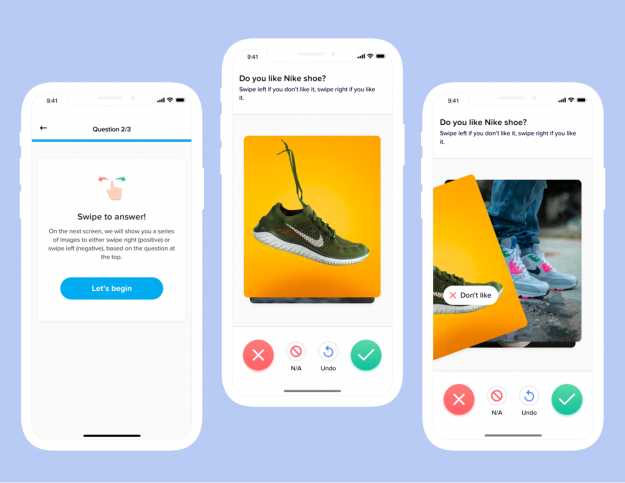
CitizenMe: Swiping image question for survey
Overview:
CitizenMe is a mobile app for survey. In a research, our users (Citizens) claimed our current survey format is boring and not engaging. On the other side, our clients were requesting to provide a different kind of survey option instead of typical survey format. They wanted the citizens emotional involvements in the answers, users should understand what they are answering. So, it will bring quality answers from the citizens.
My Roles:
Primary Researcher
Secondary Research
Wireframe Designer
User Interface Designer
Interaction designer
Collaborator with Developer
Duration:
Deliverables:
Understand & Define Problem:
Understanding Users:
We found two major problems by the user research
1) Requires reading:
The question format has lot of texts and users need to read all questions and options very carefully in order to provide honest answers.
2) The question type is boring:
Users claimed this kind of questions are very typical and they are not entertaining. This kind of questions are not fun to do and sometimes users lose motivation to complete the survey.
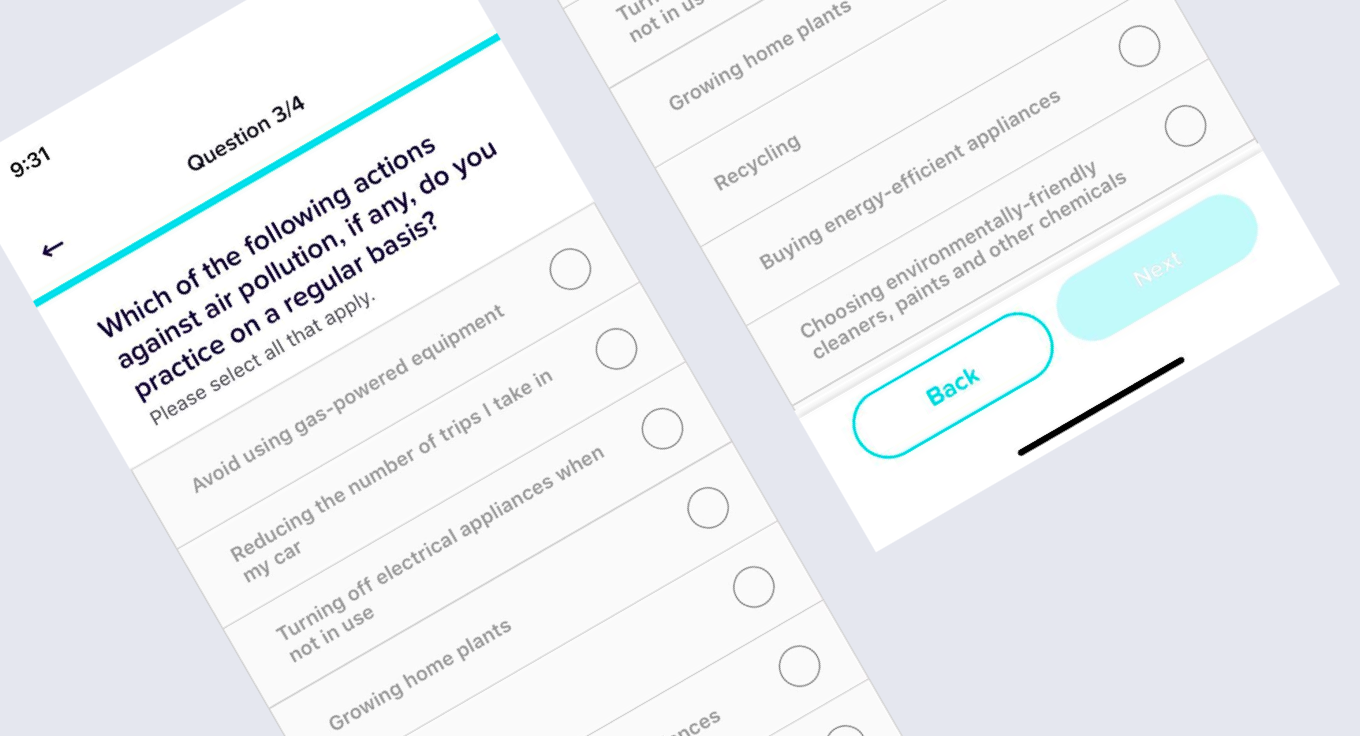
Product Solutions:
We had team session about how to reduce the cognitive effort of user, how can we make the users to read less and how to make it more entertaining. After long discussion, we agreed to introduce the “image swiping” question format.
Solution 1 - Use images to reduce reading:
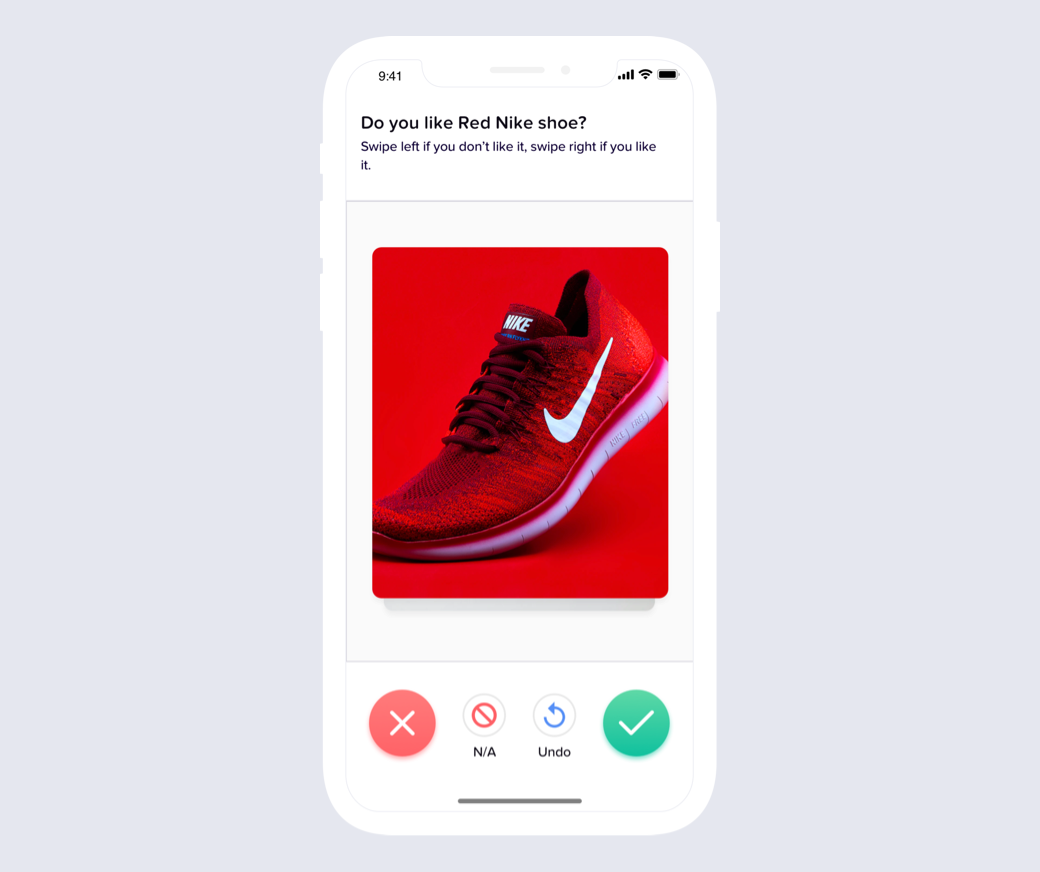
Solution 2 – Swipe image to answer:
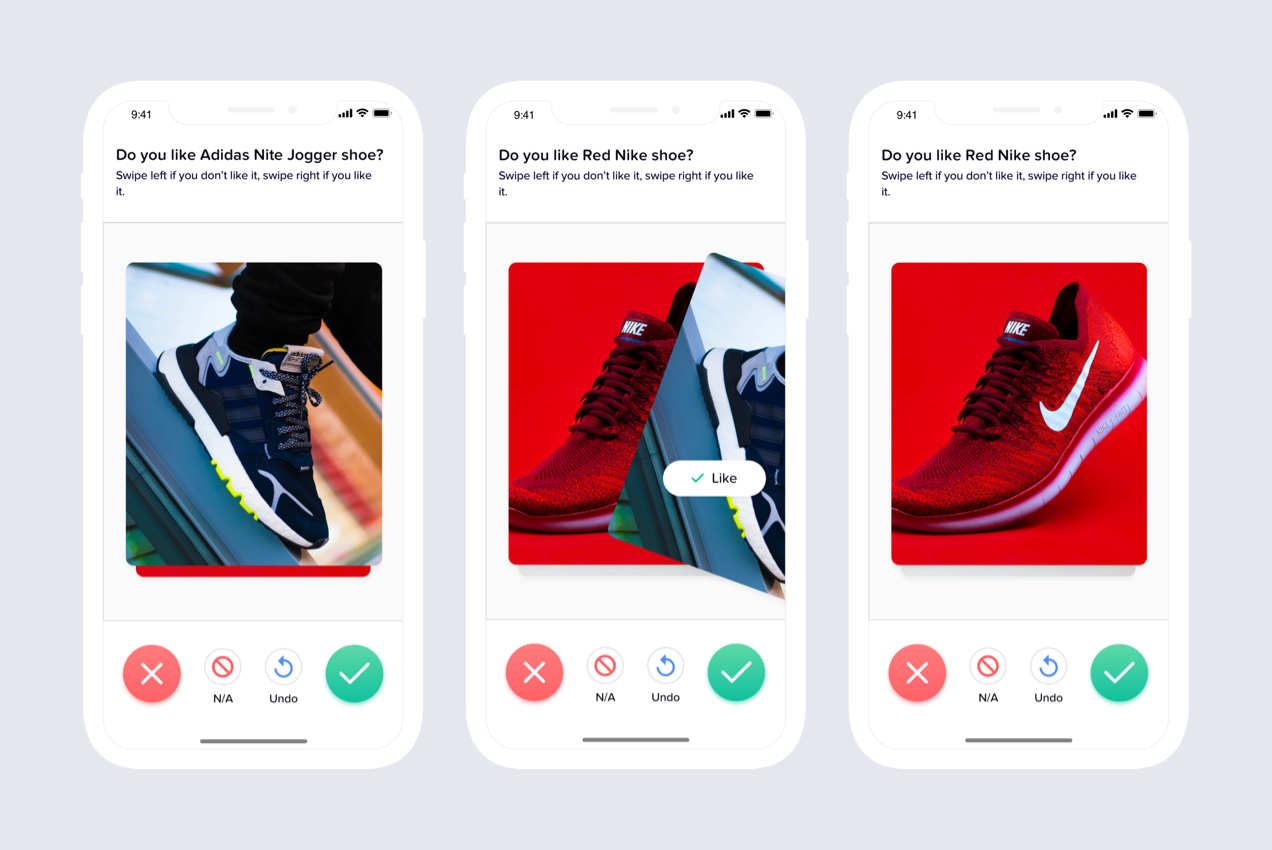
Extra Feature – Undo answer:
Design & Prototype
Wireframe Design:
Based on all the solutions, I have designed few versions of the wireframe. I shared the wireframe with our product team to get some initial feedbacks. My team members were really happy to see the first version of the wireframes. They also give me suggestions, such as, the way I introduce the undo format, we can do it in simpler method.
Below is the interaction of the wireframe:
User Testing:
We have conducted a new survey inside our platform showing the wireframe video to our citizens. Total 731 citizens participated in that survey, and more than 95% of the citizens liked the idea and they found its very entertaining. However, they raised some questions, like, what if they don’t want to give the answer or they don’t know the answer. This question triggered us to introduce the N/A (Not applicable) option as answer. Below is a screenshot of users feedback about the feature.
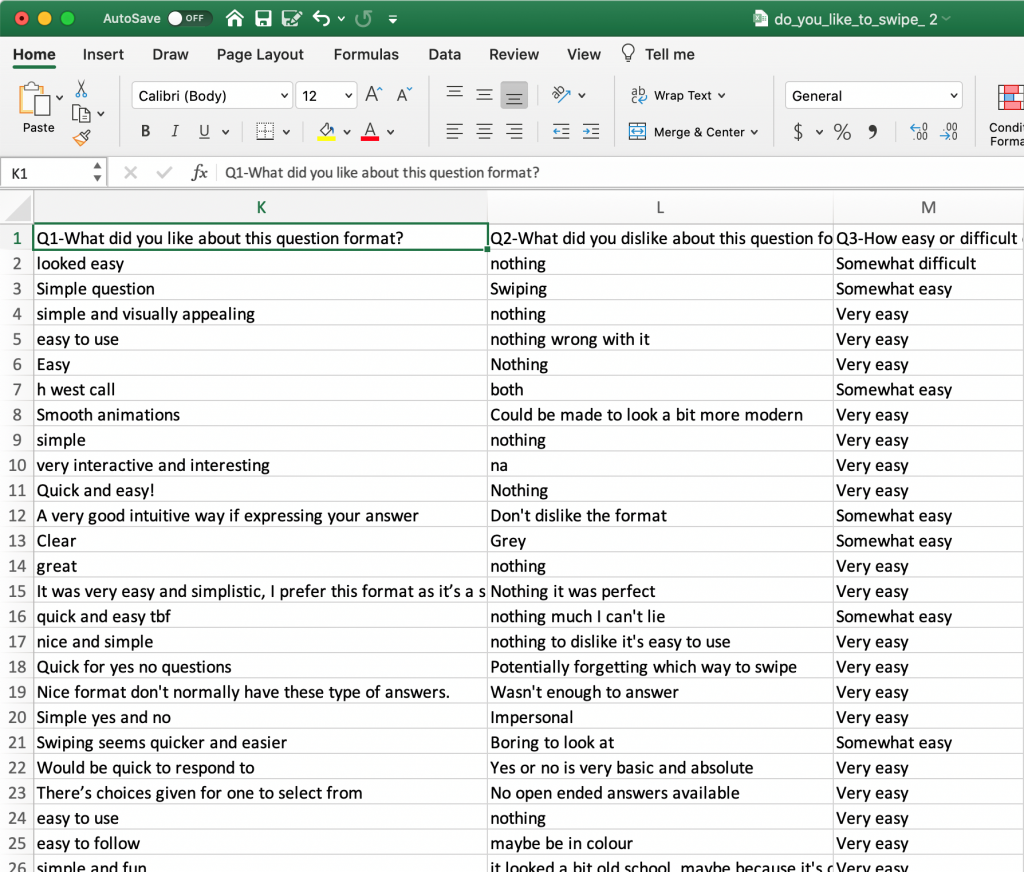
UI Design:
Keeping the user feedback in mind I have designed some draft screens to show my team members. The team liked the visual style I introduced in the app which were reflecting the style of dating apps. I followed the dating apps style because they are fun and entertaining to use. Instead of only having the swiping functionality I have introduced the option to positive (like) and negative (dislike) button. So, when the user is tired to swipe, they can just tap and move to the next image. The team said it’s a great design decision. They also gave me some suggestions, like, in the tool tip screen, on the swiping icon I can make the left arrow red and right arrow green, unlike the way I created it with both arrow in green color. They also provided me some suggestions to improve the copy (text) of the design.
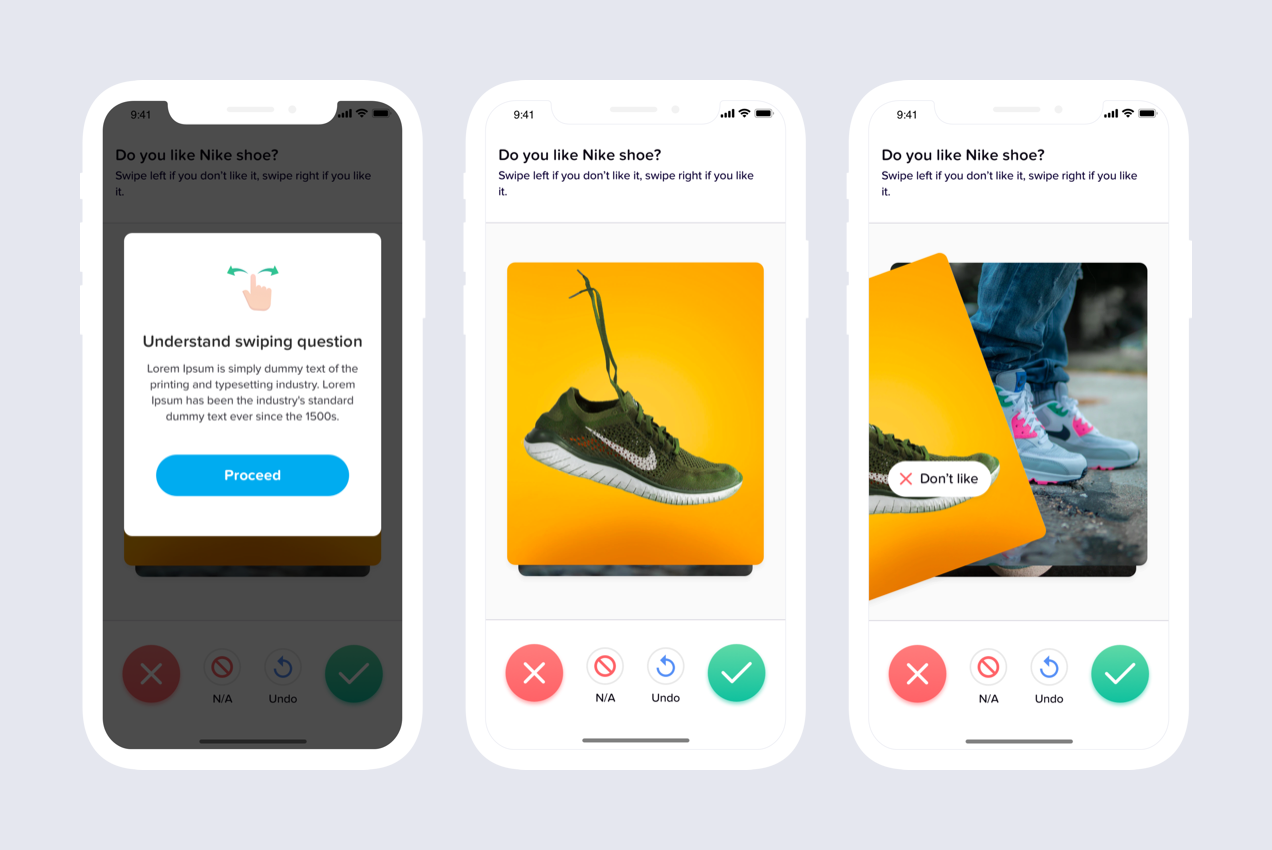
After taking the team feedback I iterated the design. I show the design to product team, development team and marketing team. Everyone was very happy with it. However, the development team put a restriction that the “Undo” function would work during the survey process, but once the user completes all questions then they cannot “Undo” the ending one, which means users can undo all image but not the very last one. Therefore, I had to come with another solution. So, I have introduced the “retake” functionality. This means, if the users complete all questions and what to undo, then they have to retake the whole survey again.
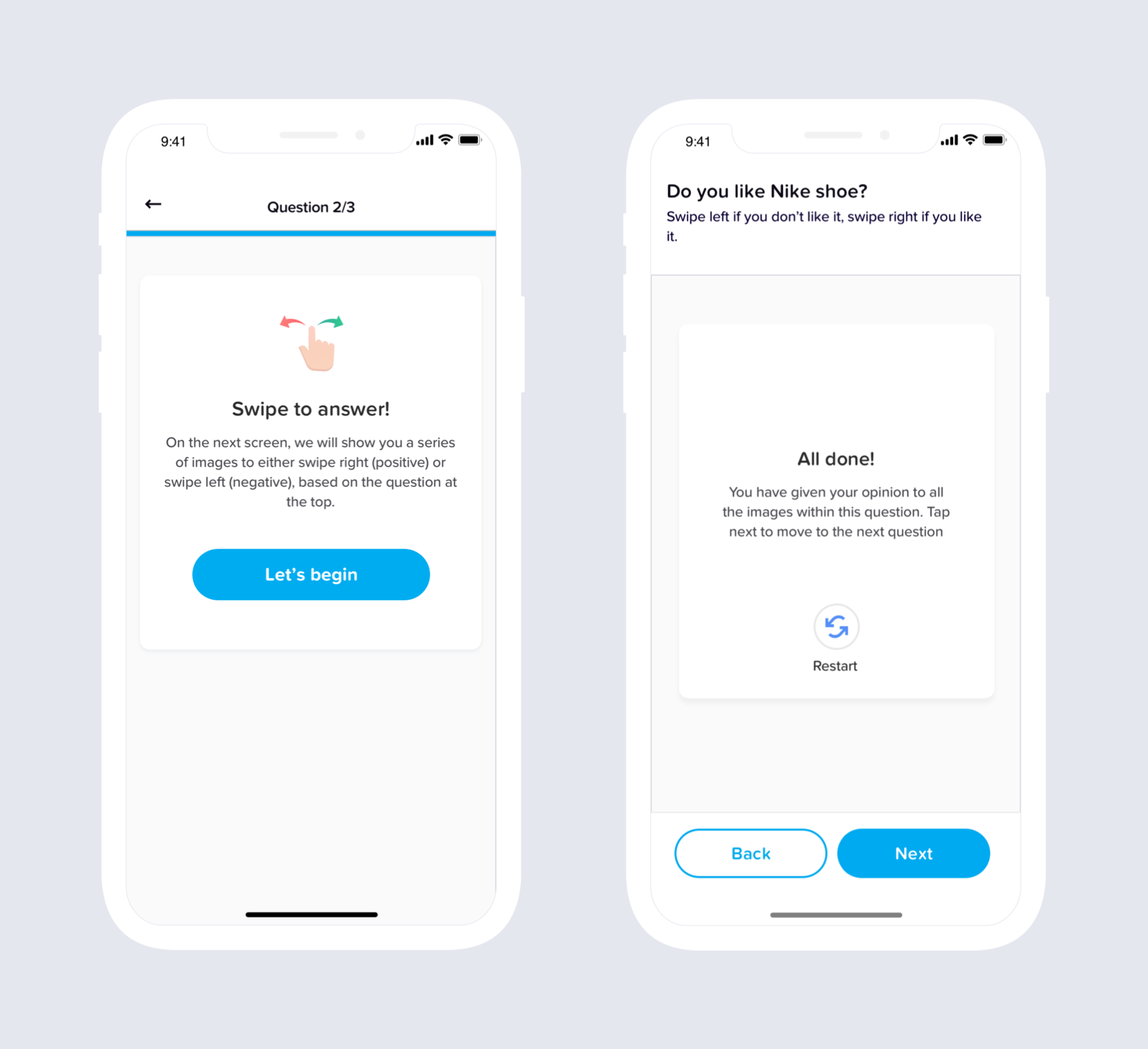
Interaction Design:
Testing with development team:
Final Preview:
Results:
The design was able to reach its success metrics.
- Citizens really liked and enjoyed the new feature in the app.
- Our clients were also happy with this feature. They found, now they can understand user reaction about a particular image which helps them to get better customer insight.